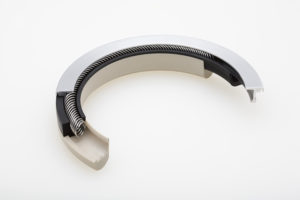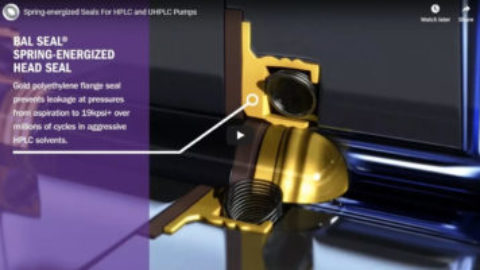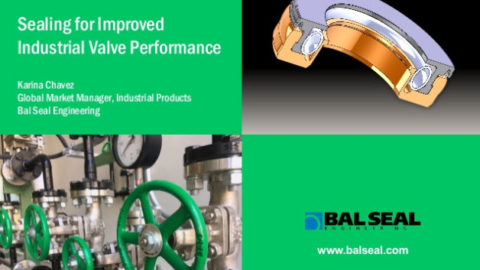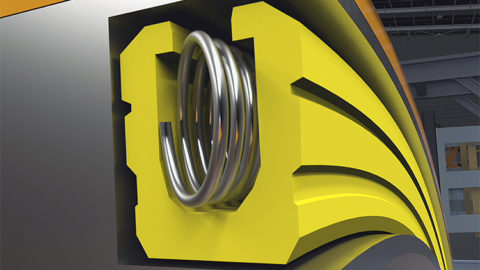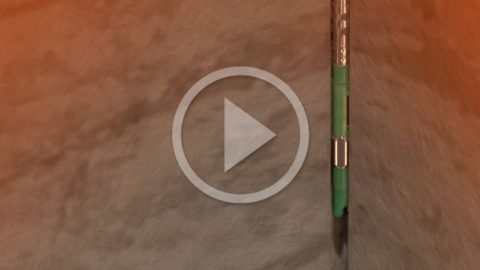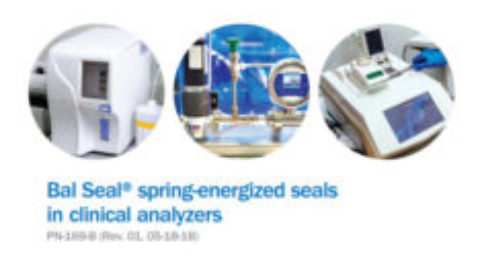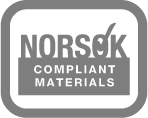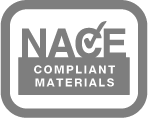Just like millions of other kids growing up during the mid-1970s heyday of Saturday morning cartoons, I used to watch an animated series called Super Friends. Glued to the tube, bowl of cereal in hand, I would marvel as Superman, Batman, Wonder Woman and a veritable A-list of other superheroes collaborated and focused their unique powers on a problem that threatened to destroy the planet. If you were a fan, you know that they always emerged victorious.
By today’s standards, my beloved childhood cartoon seems low-tech and dated. But its underlying message still rings true: combining the best characteristics of individual constituents often achieves amazing things.
As a grown-up applications engineer, I frequently apply the same basic principle in my work. That is, when I am faced with the challenge of sealing critical gear used in upstream oilfield processes, I do not always consider a single material or configuration. Instead, I think about how I can combine the properties of each to create a solution greater than the sum of its parts.
If you are designing for today’s hotter, faster oilfield equipment applications, this approach may work for you, too.
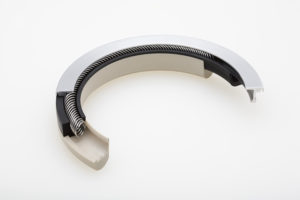
Rethinking Traditional Sealing Methodologies
Like television and the rest of the technological landscape, the oilfield industry has experienced sweeping changes during the past 25 years.
Market conditions, coupled with advances in the quality and performance of pumps, drives, steerables and other equipment, have resulted in exploration and production practices that are far more aggressive and extreme.
Today’s contractors, for instance, are pushing deeper into wells and seeking a much higher rate of penetration. Wash pipe swivels, once considered to have peaked at 120 rpm and 3,700 psi, now regularly run at 200 rpm, between 5,000 to 7,000 psi. Well bore diameters have been boosted from 3 to 4 in, and mud volume has increased exponentially.
This new frontier of higher temperatures, pressures, and speeds is placing unprecedented demands on the design engineer whose job it is to protect expensive motors, sensitive electronics and other critical internal components.
It is also forcing a more careful evaluation and, in many instances, a serious rethinking of traditional equipment sealing methodologies.
Does the Perfect Seal Exist?
Before we explore a few of the benefits and pitfalls of popular sealing options in different applications, it is important to note that a “perfect seal” does not exist. More specifically, no single material and/or configuration will solve a sealing challenge 100% of the time.
Similarly, in oilfield environments where seals commonly encounter drilling mud, sour gas, pressures up to 22,500 psi and temperatures in excess of 350 °F, the goal cannot be infinite service life and zero failure; such a target just isn’t realistic.
Instead, the focus must be on improving seal reliability and predictability. These key factors make one solution better than another. Achieve both, and you will ultimately be able to offer products that give customers better value, more uptime and more productivity.
Sealing Solutions in the Oilfield industry
While change has been constant in the oilfield industry, oilfield equipment sealing has remained relatively unchanged. In fact, many of the same seal materials and types have been used for generations.
Below is a snapshot of five widely-used solutions, along with the most typical applications.
- O-Ring—Typically the first line of sealing defense, the O-Ring seal works well in valves, LWD and MWD tooling and rotary steerables. It is a relatively inexpensive, readily available seal type that is easy to install. However, it offers only limited chemical compatibility and, depending on material type, can have narrow operating temperature and pressure ranges, making it susceptible to explosive decompression. The O-Ring can, in some cases, exhibit high “stiction’’ and high/inconsistent friction, causing it to bond to some hardware.
- Compression Packing—The seal type of choice for many progressive cavity pumps, mud pumps/plunger pumps/triplex pumps, valves, wash pipe swivels and downhole tools, compression packing can serve as an inexpensive, off the shelf solution. Unfortunately, it must also be constantly maintained and tightened until, at some point, it begins to leak. Chemical compatibility is also an issue with this seal type, as the elastomer or braided material must be carefully paired with the sealed media. Compression packing is widely considered a fast, fairly effective fix, but it can pose problems when used in a piece of equipment that is difficult to access and maintain.
- Spring-Energized U-Cup Seal (Elastomeric)—A seal type commonly found in rotary steerables, mud pumps, piston pumps and control valves, the spring-energized elastomeric U-Cup is moderately expensive and readily available. It offers good chemical resistance, but has significant pressure and temperature limitations.
- Spring-Energized Engineered Plastic (PTFE)—Ideal for use in valves, LWD and MWD tooling and rotary steerables, the spring-energized PTFE seal can basically be used anywhere an elastomeric ring or packing would go, but it is not as readily available or easily installed. It is chemically inert, and it offers higher temperature and pressure capabilities, low/controlled friction. This seal type is typically considered moderate in cost, as it is usually machined to order. However, some OEMs leverage its chemical compatibility to realize inventory savings by using a single part number for sealing more than one type of media (water, air and oil, for instance).
- Mechanical Face Seal—This seal’s ability to perform in high pressure and high velocity makes it generally regarded as the standard for pumps, wash pipe swivels and other high pressure/high velocity equipment applications. It offers good temperature resistance and chemical compatibility, too. However, performance can be costly; the mechanical face seal comes at a premium price. It also requires extremely tight tolerances and a means of continuous lubrication to work properly.
General Benefits and Uses of Seal Types and Materials
| Compression Packing | O-Ring | U-Cup Seal (Elastomeric) Spring Energized | U-Cup Seal (PTFE/blend) Spring Energized | LKS Seal (Multi-component PTFE blend/Composite) Spring Energized | Mechanical Face Seal | |
| Operating Temperatures | Dependent | -70° to 400° F | -65° to 350° F | -320° to 500° F | -70° to 550° F | -40° to 500° F |
| Chemical Resistance | Excellent | Good | Good | Excellent | Excellent | Good |
| Load vs. Deflection | High | High | Medium | Medium | Medium | N/A |
| Dynamic Friction | High | Medium | Medium | Low | Low | Medium |
| PV Limit (Low Pressure/High Velocity) | Moderate | Low | Moderate | High | Very High | Very High |
| PV Limit (High Pressure/Low Velocity) | Moderate | Low | Low | High | Very High | Very High |
| Gland / Piston Design | Split, Stepped or Solid | Split, Stepped or Solid | Split, Stepped or Solid | Split, Stepped or Solid | Split | Special |
| Hardware Tolerances Required | Fairly Tight | Tight | Tight | Tight | Tight | Extremely Tight |
| Periodic Adjustment | Necessary | Not Necessary | Not Necessary | Not Necessary | Not Necessary | Not Necessary |
| Space Requirements | Large | Small | Medium | Medium | Medium | Large |
| Shelf Life | Dependent | Limited | Limited | Indefinite | Indefinite | Indefinite |
| Propensity of Material to Creep | Low | Low | Low | >Moderate | Low | N/A |
| Cost to Purchase | Low | Low | Moderate | Moderate | Expensive | Very Expensive |
A Multi-Component Approach to Oilfield Equipment Sealing
Although they have been around for a while, the preceding seal types continue to deliver acceptable performance in many oilfield applications, as long as hardware, surface finish, material selection and other factors are properly addressed.
However, today’s creeping pressures and accelerated speeds can occasionally prove too much for them. The result can be unexpected failure, productivity loss and, in some cases, serious environmental impact.
A growing number of oilfield design engineers are evaluating the benefits of a multi-component approach to sealing. Borrowing a page from the Super Friends play book, this approach leverages the unique properties of several materials and seal configurations to deliver better reliability and predictability.
The concept is not new. Seal manufacturers have been combining elastomers, polymers, even organic materials, for decades. But recent advances in material formulation, design and machining technology have produced a new breed of seal that can take all the heat, pressure and speed some oilfield applications can dish out—and then some.
One example of just such an innovative amalgam can be found in a recently introduced multi-component seal consisting of a spring-energized, graphite-reinforced PTFE sealing ring coupled with a high-temperature engineered thermoplastic anti-extrusion element and a metal locking ring.
In this seal, each of the components has its own unique role to play. The metal locking ring reduces OD shrinkage at low temperatures and prevents the seal from becoming dynamic. The graphite-reinforced seal jacket performs well in high-temperature, high-pressure service conditions while providing a high level of extrusion resistance at moderate speeds. The thermoplastic anti-extrusion element minimizes seal jacket extrusion, provides longer sealing life, forces wear to occur at lip contact area (not the hinge point), and extends seal performance range at low and high temperatures (-94 °F to +550 °F). The Hastelloy* canted coil spring exerts uniform sealing force against the shaft, reducing heat build-up and extending seal life while providing excellent resistance to corrosion in a variety of media.
This seal and other similar multi-component seals represent a novel take on problem-solving, because they deal in capabilities rather than limitations. Their design considers, for example, how the high -temperature behavior of PEEK (which becomes more flexible at 180 °F) will complement the lubricity of PTFE, and how the force exerted by a spring can help the whole package provide longer service life. In other words, it is sealing from a holistic perspective.
Prioritizing Sealing in Oilfield Equipment Design
The bottom line is that better seal performance equals greater equipment uptime. Uptime translates into greater productivity, and productivity is profit. Conversely, the unexpected failure of one seal can mean hundreds of thousands of dollars in downtime costs—not to mention the potential for adverse environmental impact.
As engineers who design for the oilfield, we understand the importance of reliability and predictability, but we also know that no seal will last forever. Traditional sealing types and materials may work for an application, but trends toward higher speeds and pressures may compromise them.
Combining the best in materials and design to create a solution that behaves in a predictable, reliable way will maximize uptime and equipment performance.
If your solution is also easy to install, maintain and replace, you will end up looking like a superhero.
Written by Mike Foster, Seal Applications Engineer for Bal Seal Engineering Inc.
